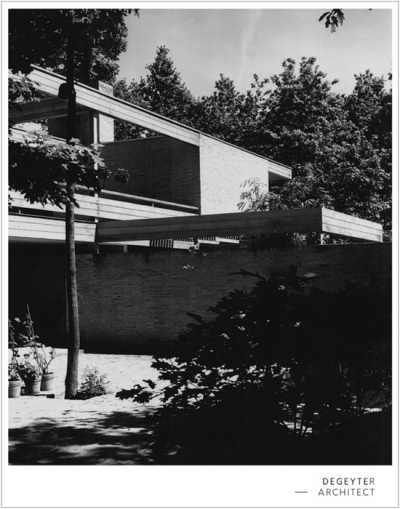
Degeyter - Architect
During the first ten years Arthur Degeyter built mainly classically inspired houses. The first ‘modern’ house he designed was for glass artist Michel Martens who later became his collaborator designing and manufacturing stained glass windows for Degeyters many churches. The architect executed a lot of commissions for the diocese of Bruges including renovations, restorations and newly constructed churches. Degeyter worked for small and big companies. His most representative realizations are the KI-centrum (Loppem), the offices of the National Bank in Bruges and the offices and storage sites of Vandecasteele Houtimport (Aalbeke). But the most important and largest part of the architect’s oeuvre is without any doubt houses. They bring out the stylistic diversity of the architect. He possessed the talent of keeping the old and embracing the new at the same time and respected local materials and traditions. He was an artist captured by beauty and inflamed by architecture. We see this mostly in his restorations and renovations. His approach is like a ‘Gesamtkunstwerk’ whereby interior, design and exterior are all part of the result. He was not limited to designing just a house or structure but contributed to the furniture and gardens too. His oeuvre is massif, he himself estimated around a thousand realizations. The majority of his work is situated in the West of Flanders but can be found in the whole of Flanders and occasionally a villa is located in The Netherlands, France or Spain. In 1992 the architectural office Arthur Degeyter ceased to exist. But the architect kept designing in collaboration with his son Jan for more than ten years after that.